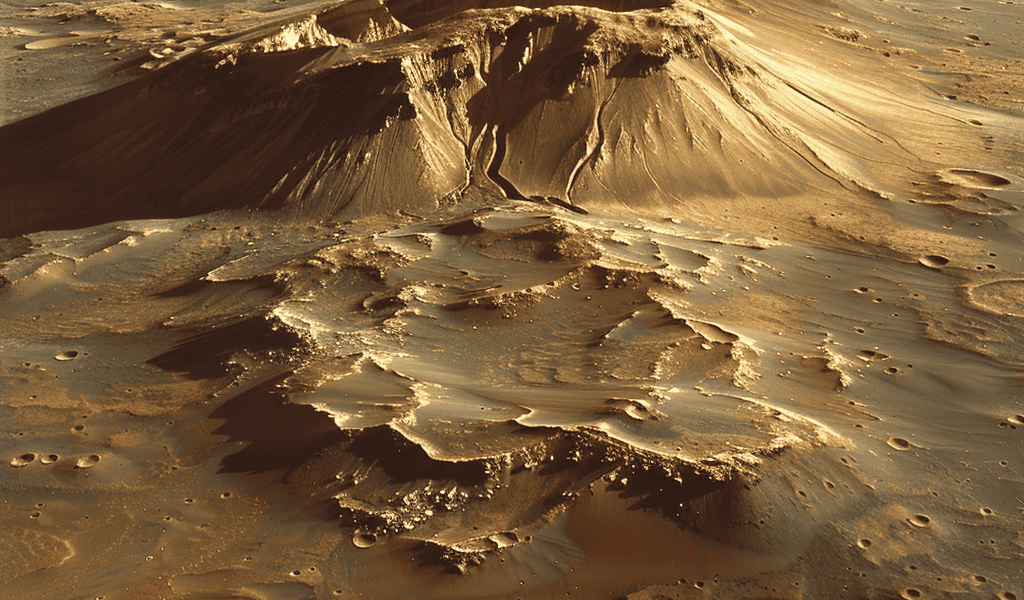A giant volcano and possible buried glacier ice have been discovered in the eastern part of Mars’ Tharsis volcanic province, near the planet’s equator. This groundbreaking announcement was made at the 55th Lunar and Planetary Science Conference in Texas, revealing that the giant volcano, provisionally designated “Noctis volcano,” had been hiding in plain sight for decades.
The structure, centered at 7° 35′ S, 93° 55′ W, reaches an elevation of +9022 meters (29,600 feet) and spans 450 kilometers (280 miles) in width. It is situated just south of the planet’s equator, in Eastern Noctis Labyrinthus, west of Valles Marineris, Mars’ vast canyon system. The volcano sits on the eastern edge of a broad regional topographic rise called Tharsis, home to three other well-known giant volcanoes: Ascraeus Mons, Pavonis Mons, and Arsia Mons.
Although more eroded and less high than these giants, the newly discovered volcano rivals the others in diameter. Possible buried glacier ice is also reported under a relatively recent volcanic deposit within the perimeter of the eroded volcano, making the area attractive for the search for life and future robotic and human exploration.
The discovery of this giant volcano and potential glacier ice points to an exciting new location to study Mars’ geologic evolution through time and search for signs of life. The structure’s gigantic size and complex modification history indicate that it has been active for a very long time, from ancient through recent times. This finding opens up new possibilities for future exploration and research on Mars.
Imaged repeatedly by orbiting spacecraft around Mars since Mariner 9 in 1971, the deeply eroded giant volcano had been overlooked until now due to its altered appearance. Its location at the boundary between the heavily fractured Noctis Labyrinthus and the monumental canyons of Valles Marineris further adds to its significance.
The discovery of the Noctis volcano and its potential glacier ice has sparked great interest among scientists and space exploration enthusiasts, as it presents a promising opportunity for further investigation and potential future missions to explore this intriguing region of Mars.





